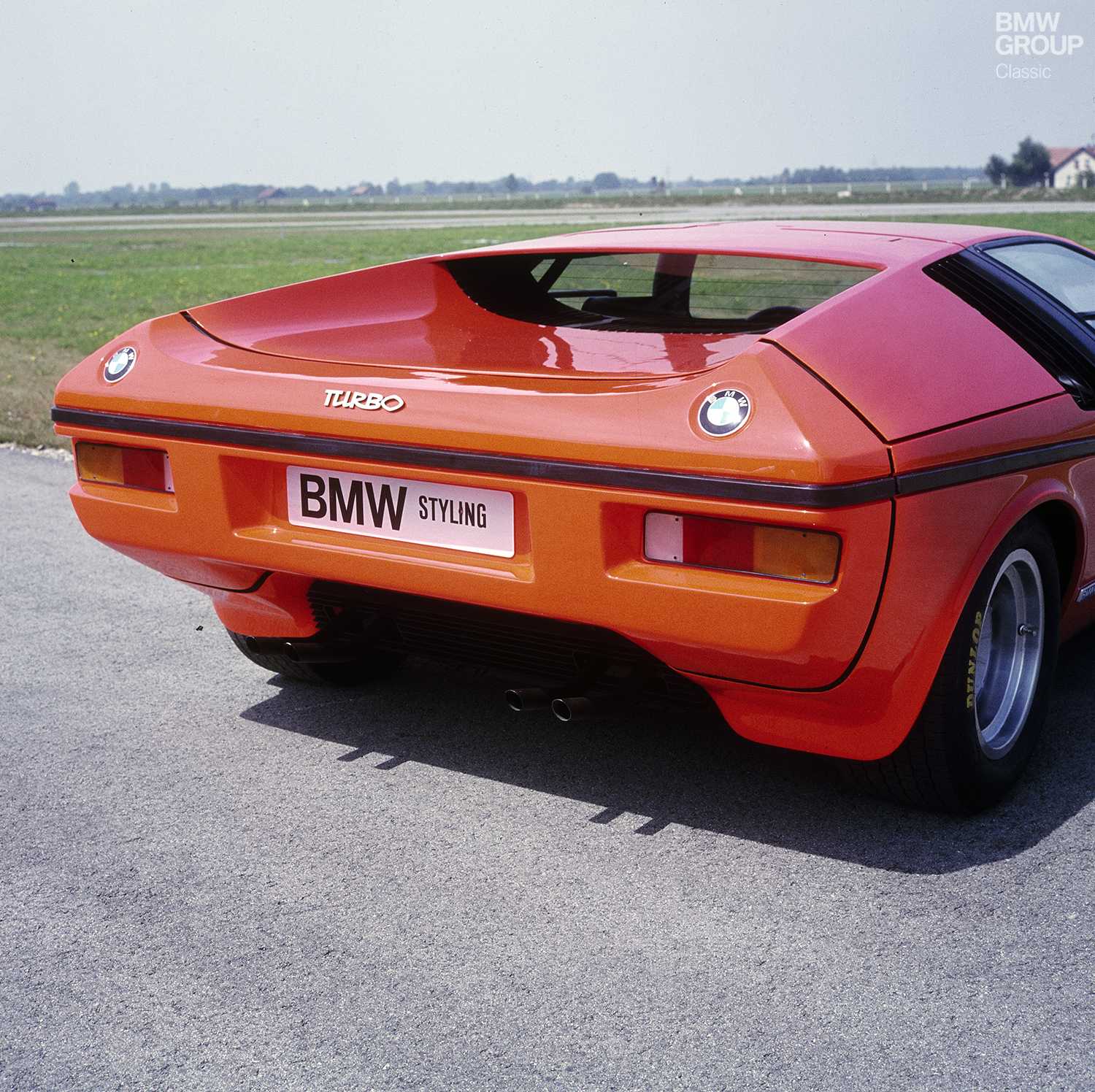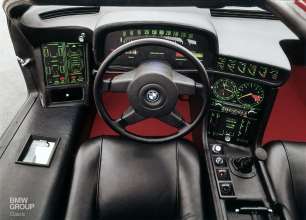BMW had worked hard to chisel out a sporting image for itself, and come 1972 it was time to showcase what it could do: Off came the covers of a genuine dream machine. The BMW Turbo was a study car as spectacular as it was sophisticated, its futuristic technology cloaked in a design of breathtaking impact. Boasting eye-catching gullwing doors, new foam-filled bumpers, advanced safety technology and a punchy turbocharged engine, the BMW Turbo opened a window into the automotive future.
In 1972 Munich hosted the summer Olympic Games, with the hub of the action located just opposite BMW headquarters. Standing centre stage at HQ was the company’s new office block, a fresh landmark for the Bavarian city and duly christened the “four-cylinder” building. This period of radical change and major challenges around the world provided the perfect backdrop for the presentation of the BMW Turbo – a dream car as if tailor-made for the times. With its gullwing doors, the Turbo not only looked spectacularly good, it also served as a test lab on wheels for new technologies. Nowadays we take turbocharger tech and impact-absorbing bumpers for granted, but back then this was futuristic stuff.
For many years, Italy could justifiably claim to be the beating heart of automotive design. BMW was among those who outsourced styling jobs to specialists across the Alps, Bertone and Michelotti creating genuine milestones in the company’s history in the shape of the BMW 3200 CS and diminutive BMW 700. But that didn’t mean there was ever a shortfall of ambition within its own ranks. Indeed, when BMW’s chief stylist Paul Bracq was handed the brief for the Turbo in 1971, he didn’t hold back. This was never a model intended for series production, so Bracq indulged in the full gamut of freedoms only a study car can allow. The sporting machine that resulted was a pure two-seater with mid-mounted engine – ultra-low to the ground, lightweight and yet extremely protective of its passengers. The BMW Turbo was conceived to set a benchmark in technical innovation.
Foam calls.
America was experiencing a “big bumper” phase in the early 70s, and even everyday run-arounds ended up doing a rather grotesque impression of a tank. The BMW Turbo took it upon itself to signpost a far more aesthetically pleasing approach to the job at hand. Although the German car was equally adept at swallowing up car park shunts as its American brethren, it was difficult to see how – given the absence of bumpers in the conventional sense. Instead, the Turbo employed deformable, foam-filled plastic elements which refused to crack in small-scale impacts and reclaimed their original shape. Passenger safety was taken care of by perfected inertia-reel seatbelts, special steering wheel impact protection (still sans airbag) and a sturdy rollover bar. The car’s orangey red paintwork also doubled as a safety feature, its graded crescendo at the front and rear heightening the dramatic effect.
Turbos trump displacement.
Turbochargers were nothing new in 1972 but the development of the technology blossomed over the course of the decade, bringing greater power and efficiency to small engines. The BMW Turbo took its evocative name from the blown high-performance engine mounted midships, a 2-litre four-cylinder specimen producing 200 hp but which could be tickled to as much as 280 hp by increasing charge pressure. The Turbo was a light car (it tipped the scales at just 980 kg), so this was enough to power it from 0 to 100 km/h (62 mph) in 6.6 seconds and on to a 250 km/h (155 mph) top speed – impressive stats at the time.
The red-hot icon.
The BMW Turbo became a very special milestone in BMW design. It flagged up new possibilities and solutions which would later find their way into series-produced models. Sometimes these were only details – the pair of BMW roundels on the rear end of the 1978 BMW M1 (premiered by the BMW Turbo six years earlier) being a case in point.



